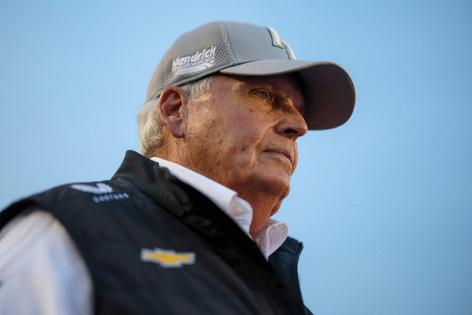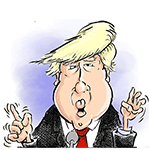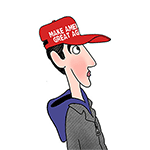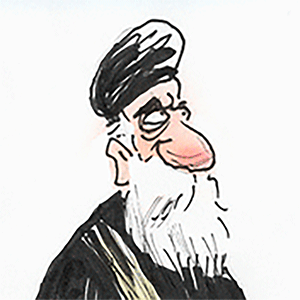Scott Fowler: NASCAR's Rick Hendrick on 40 years of fast cars, Jimmie, Jeff and an unimaginable tragedy
Published in Auto Racing
CONCORD, N.C. — NASCAR owner Rick Hendrick was raised on a tobacco farm in rural Virginia.
“I didn’t know what I wanted to do in life,” he said, “but I knew that wasn’t it.”
What Hendrick did know is that he was an extrovert who loved fast cars. The NASCAR Hall of Famer turned his twin passions for horsepower and people into Hendrick Motorsports, which is celebrating its 40th year of existence in 2024 and ranks as the winningest team in NASCAR Cup series history.
Legendary drivers like Jimmie Johnson and Jeff Gordon helped fuel Hendrick Motorsports’ 14 Cup series titles. A 15th championship is very possible this year. Hendrick drivers William Byron, Kyle Larson, Alex Bowman and Chase Elliott all remain alive in the NASCAR postseason entering an elimination race at the Bank of America 400 ROVAL at 2 p.m. Sunday at Charlotte Motor Speedway, when the playoff field will be sliced from 12 drivers to eight.
Hendrick recently sat down for an extensive interview for our “Sports Legends of the Carolinas” series and talked about his own beginnings, the origin of “Days of Thunder” and the horrific 2004 plane crash in Virginia that devastated both his family and Hendrick Motorsports. This interview has been lightly edited for clarity and brevity. A fuller version is available on the “Sports Legends of the Carolinas” podcast.
— Scott Fowler: What’s the 40th anniversary season of Hendrick Motorsports been like for you?
— Rick Hendrick: We’ve had a really good year, celebrating 40 years. When you finally hit that milestone, you think about how close you came not to have made it the first year. And then you look back through all of the wins and the championships and the people that you’ve met along the way — that’s been one of the most rewarding things to me.
The NASCAR community is a tight community. I was talking to (fellow NASCAR owner) Joe Gibbs on the phone right before we came in here. I get to do the two things in life I love the most outside of my family: automobiles and racing. I’ve been very blessed that I can make a living and be successful in both ends of the business.
— SF: How young were you when you became a gearhead?
— RH: 10 or 12 (years old). This was in Virginia, on the family tobacco farm.
My dad worked on the weekends with a race team, and he ended up being involved in a couple of the modified cars. And so I would go to the garage sometimes.
I bought a ‘31 Chevrolet for 250 bucks. And I took used parts out of the modified car and built the motor myself in high school auto mechanic class, and I drag-raced that car. I still have it today. That was in the muscle car era, in the ‘60s. The Beach Boys. “She’s real fine, my 409” ... I dreamed about owning a Corvette. ... Never thought I’d own one. Now I’ve got a bunch of them.
— SF: How would you describe Rick Hendrick as a driver when you raced cars yourself?
— RH: I was a good drag racer. I won a lot in drag racing. ... I ran a couple of Cup races, and I found out early on I could hire people a lot better than I was. I still enjoy cars. I still enjoy getting on a road course and driving some. ... I also love speed on the water. I race boats. So I have a boat today that I run when (Lake Norman) is calm, and nobody’s out there, at 130 (miles per hour).
— SF: How’d you get to Charlotte in the first place?
— RH: I met a car dealer when I was in school (in Raleigh at a co-op program between N.C. State and Westinghouse Electric). I actually went to work for him in Raleigh. And then I had an opportunity (at age 26) to fix a broken dealership in a small market in Bennettsville, S.C. And then City Chevrolet came available, and so I moved to Charlotte (in the late 1970s).
George Shinn (who would later become the original Charlotte Hornets owner) was an early investor. I had sold him cars in Raleigh, and so he came in as a partner with me. We did City, and then everything just exploded from there.
— SF: How many people do you employ at Hendrick Motorsports now?
— RH: 600.
— SF: And how many do you employ at Hendrick Automotive Group?
— RH: It’s right at 11,000. They told me it was 10,997. I said, “Can’t you find three more?”
The origin of ‘Days of Thunder’
— SF: Tell me how “Days of Thunder,” the 1990 movie about NASCAR starring Tom Cruise, began.
— RH: I’m at Road Atlanta, and I meet Tom Cruise with Paul Newman. And Paul wants to drive one of my cars in a practice, and we did it. I didn’t even know who Tom Cruise was. And then Tom and I became friends, and that’s how “Days of Thunder” came about.
Actually, Tom would come spend a couple of weeks with us in the summer, and he loved to drive, and we’d go to different tracks and drive road courses. And so he said one day, “Let’s make a movie.” ... The story is about a car dealer in Charlotte that started with one car. Randy Quaid played my part. And then it was loosely about Tim Richmond and Dale Earnhardt. ... Robert Duvall played (crew chief) Harry Hyde. Robert was more like Harry than Harry was.
— SF: You’ve had hundreds of wins at various levels. What is your most cherished win as an owner?
— RH: Seeing my son win the inaugural race in Kansas in a truck (in 2001). I was an emotional wreck, with my wife. And then when I went into the press box and I stood behind and listened to him being interviewed — that was the coolest thing. You always remember seeing your kids do something really special.
— SF: Is it true you had big plans for Ricky to take over your businesses?
— RH: Yeah. He would have done a better job at this than I did. ... Ricky stepped out of the car in ‘03 when he had a wreck in Vegas, and it tore everything in his shoulder and pinched some nerves in his neck. ... He said: “I think I need to get out of the car and put Brian Vickers in.” And Brian won the championship.
Ricky had tremendous people skills, and he loved racing. Everybody here really enjoyed being with him. ... I built his office right next to mine (at Hendrick Motorsports).
— SF: If Ricky were alive today running Hendrick Motorsports, would you already be at least semi-retired?
— RH: (Laughs) Oh, he would have probably kicked me out by now.
The plane crash of 2004
— SF: A Hendrick Motorsports plane flew into a mountain in Virginia on Oct. 24, 2004, killing all 10 people aboard, including Ricky. How did you go on after that?
— RH: That day (pauses). My brother, my son, my two nieces — it wiped out our family. And Jeff Turner (then the general manager at Hendrick Motorsports). And Randy Dorton, who had been one of the main staples of this company.
If you ever lose a child, you’ll know. It’s nothing as horrible as that is. ... It’s a small fraternity that you don’t want to be in.
I don’t even remember much about the first week (after the plane crash). ... I didn’t know if I could come back.
One day, I said, “I’ve gotta go over and talk to the people (at Hendrick Motorsports).”... It was emotional. And I knew then that they would want us to go on — all these people that worked so hard to build what was here.
And I made a commitment to them that we would fight on. That’s what those on that plane would want us to do.
— SF: The plane was headed to Martinsville, Va., a track where Hendrick Motorsports had long enjoyed great success. Did you ever travel to Martinsville after that?
— RH: I don’t like to go there in the fall, because the fall — just the air that day. The weather. Going up to the mountain (where the plane crashed). I like to go in the spring, but I don’t like to go in the fall. I don’t know when the last time is I’ve been there in the fall.
Hendrick Motorsports succession plan
— SF: Will Jeff Gordon now replace you as the head of Hendrick Motorsports when you do retire?
— RH: Yeah. I kid Jeff. I say, “I don’t know whether you’re a little brother or a son. I’d like to think about you as a little brother.” I like to give him a hard time.
But yes, Jeff and also my son-in-law, Marshall Carlson (currently president of Hendrick Motorsports). And my grandson, Hendrick, who loves the business. He’s a gearhead. He’s a senior in high school this year but he works in the dealerships. Everybody really likes him and he loves it.
— SF: How many cars do you have in your vintage car collection?
— RH: Somewhere around 300. Now I never get rid of anything. My dad was that way on the farm. He never got rid of anything. You kept every nut, every bolt, everything — just in case.
— SF: How many of those are Corvettes?
— RH: About 125 or 130. It’s the biggest (collection) in the world. And I’ve got over 300 guitars.
— SF: You’re like a personal Hard Rock Cafe?
— RH: I can’t play and I can’t sing, but I’ve got some really cool friends that are good. I like country, and then pop from back in the 1980s and 1990s. I’m a big Steve Winwood fan. In today’s world, Zac Brown and Chris Stapleton are really good friends. I’ve met Kenny Chesney. They come to town and want to see the cars. ...
(The late NASCAR driver) Tim Richmond was friends with Bruce Springsteen. And so I went to a couple of concerts with Tim, and I got one of Bruce’s guitars.
Hendrick’s battle with leukemia
— SF: In the 1990s, you were diagnosed with leukemia. How did that impact your life?
— RH: On November 18, 1996, I was diagnosed with leukemia. It was a horrible experience to fight through that, because in those days you either got a (bone marrow) transplant or you’d probably not make it. And there were some experimental drugs out there.
And I met a young doctor here in town that had just moved to Charlotte, Steve Limentani, and he was a researcher in New England. ... So he helped me get into some clinical trials and I had to take this (drug) interferon. It made you feel like you had the flu.
And I took that until 2000. I knew in 1999 there was a pill coming that would do the same thing with very little side effects. And then the idea was stay alive until you got that pill.
So I got it in 1999 or 2000 and I got off of the pill like in 2003, maybe. And I’ve been clean ever since.
Jimmie, Jeff and Tim
— SF: Describe some of your best former drivers, starting with Jimmie Johnson.
— RH: Jimmie was the guy that could pick the car apart. If you listen to drivers today, they’ll say (very detailed instructions about what the car needs). ... Nobody ever did that until Jimmie Johnson came along. And so he would start running over 200 in a corner, loose and out of control, telling Chad (Knaus, Johnson’s crew chief) what he thought the car did, what needed, and what it was doing. His attention to detail and his talent — he was unbelievable.
Jeff (Gordon, who won 93 NASCAR Cup races, third all time) was so talented. Jeff just could outmaneuver and outdrive (everyone). He and Ray (Evernham, Gordon’s longtime crew chief) were like magic.
Tim Richmond had an unbelievable amount of talent. If that guy had lived, he would have won a lot of championships. He had as much raw talent as anybody I’ve ever seen, and he loved it. He would want to mess around with Earnhardt. He would want to rub on him a little bit, and he was the only guy out there that Earnhardt knew not to mess with.
— SF: How many hours are you still working a week?
— RH: Don’t ask my wife. I’d say 60 or better. And that’s not counting Sundays, going to the race.
— SF: You don’t sound like you’re near retirement.
— RH: I’m 75. I remember walking into Daytona being the youngest guy on pit road and seeing Junior Johnson and the Wood Brothers and Richard Petty and all those guys, (thinking): “I don’t need to be here.” I was in awe.
And now I guess Joe (Gibbs) and (Jack) Roush and (Roger) Penske, we’re all about the same age (and all NASCAR owners who are actively working). I love the people. We say our people are our biggest asset, and we take care of our people first. That’s why I’ve always wanted to be private and never wanted to be public. (Hendrick Automotive Group is the largest privately held automotive retail organization in the U.S.)
— SF: What’s the difference in private and public?
— RH: When you’re a public company, you’ve got pressure from a board that you’ve got to do things to grow your business. People aren’t the first priority. Profits are the first priority. And (I like to) take care of my people. I have the best insurance for them. I have disaster funds. We did 350 scholarships this year for our employees’ children. ... I give everybody (at Hendrick Motorsports) a Rolex that’s been here 20 years, and we gave 22 of them out this year. It’s rewarding when you get to be my age to see all the people that have grown up in the company.
©2024 The Charlotte Observer. Visit charlotteobserver.com. Distributed by Tribune Content Agency, LLC.







Comments